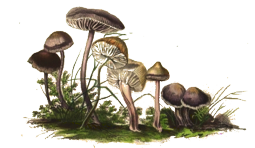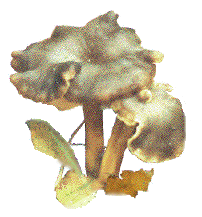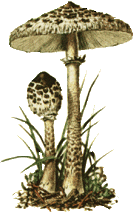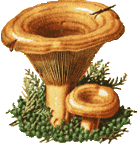
Birmingham Natural History Society: Mycology Section

The Warwickshire Fungus Survey was the Mycological Section of the Birmingham Natural History Society. It was affiliated to the British Mycological Society.
We were an active group of enthusiastic amateurs and professionals, who arranged regular forays, identified finds, and kept accurate records. Newcomers, whether beginners or experienced mycologists, were warmly welcomed. Our experienced members took particular pleasure in introducing interested beginners to this fascinating study and in helping them as they progessed.
ACTIVITIES 
Between May or June and December, between twelve and fifteen forays were held, at sites throughout Warwickshire. These were attended by both beginners and experienced mycologistsSpecimens of rare species and those new to the county were dried, their details entered on cards, and added to the Herbarium of the Warwickshire Fungus Survey, housed in the County Museum at Warwick.
Lists of species found were issued every year to the contributors to the survey, and periodically, the lists were published, along with other details in the Proceedings of the Birmingham Natural History Society. Records were also sent to be incorporated in the Database of the British Mycological Society.
Illustration to right - Cantherellus infundibuliformis photographed by a beginner at a WFS field meeting
THE SURVEY

To list all the species occurring in Vice-County38, Warwickshire, confirmed by the fungus survey panel, or by an outside referee, each speciesbeing represented by at least one specimen preserved in the herbarium.
To contribute to the knowledge of the distribution of species by recording data from forays and personal records and submitting them to the Fungus Record Database of the British Isles, FRDBI
To arrange regular forays to chosen sites, and also to visit other sites within the Vice-County and to give notice of these visits in an annual Study and Recording Programme.
To encourage and inform beginners of the attractions of studying fungi and to provide leaders of fungus forays for other interested groups of people.
Vice-Counties
The Watsonian Vice Counties were devised by Hewett C. Watson and published first in 1852 in his 'Cybele Britannica'. Essentially they are based on the county divisions at the time, but a number of the larger counties were split up so that each vice-county would represent a more or less equal recording area. The vice-county system presents a standard recording pattern, to which all county floras follow. No matter how many boundary alterations are carried out by Government, the recording areas remain the same, so that exact comparisons can be made between present records and those published in the past. Details of the vice county boundaries, with both text and maps, were published by the Ray Society, (Dandy 1969).
Dandy, J.E. 1969 'Watsonian Vice Counties of Great Britain', the Ray Society, London.
ORIGINS AND DEVELOPMENT
The survey was started in 1965, at the suggestion of Dr. Nancy Montgomery, and with the close cooperation of Dr Gill Brand ne้ Butler, then, both of Birmingham University.
An enthusiastic group of amateur and professional mycologists, the mycological section of Birmingham Natural History Society, worked during the following fifteen years to produce the Fungus Flora of Warwickshire. This group was the first of its kind anywhere, devoting itself to the identification of fungi, lichens and myxomycetes. The society employed its resources to aid the production of the Flora. Birmingham Natural History Society Website
The Fungus Flora was published in 1980 by the British Mycological Society and edited by the late Malcolm Clark. It contains detailed records of the fungi found in the area, at least one specimen with detailed notes was dried and kept in the herbarium.
It was obvious, even with the publication of the Flora that new species were still turning up, and that the Survey was well worth carrying on. Since 1980, supplements were published in the Proceedings of the Birmingham Natural History Society and new members continue to join us up until the society was disbanded in July 2021 .
The Fungus Flora of Warwickshire
Our digits.net web-counter has recorded:
Created on a
Mac
Design, construction and maintenance by Clare Hinchliffe.
Copyright Warwickshire Fungus Survey.
IIlustrations on
this site from old book plates,old prints, free internet sources and members' photographs

